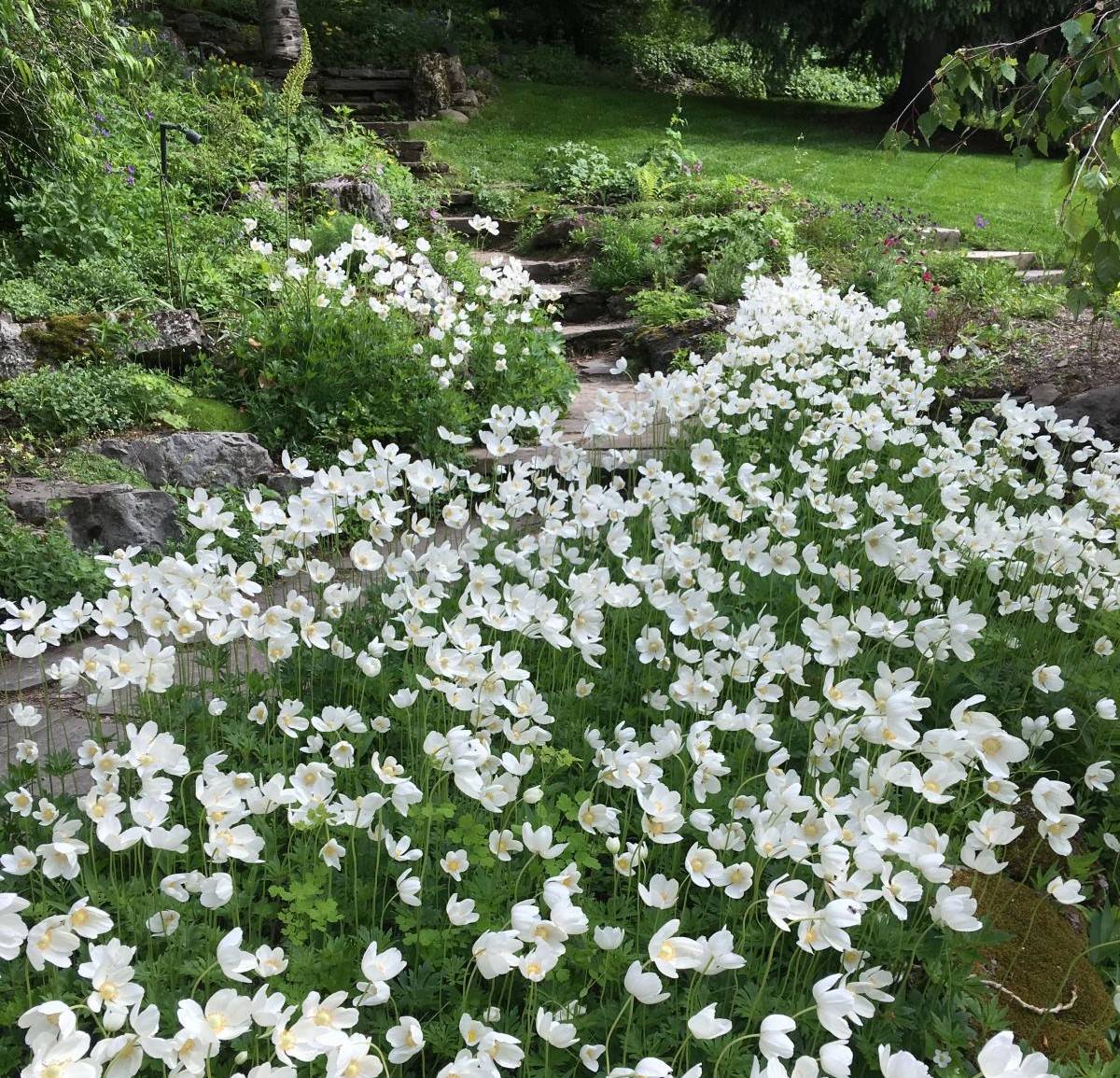
Windflower
Anemone sp.
In Greek mythology, Anemone was a beautiful young mortal and Boreas, god of the north wind, fell in love with her. He was not good at expressing his feelings, however, and he was often cold and unkind. When he touched her he was rough and aggressive. Understandably, she began to avoid him. He continued to be hostile to her and he would not leave her alone. At last she could stand it no more. When he appeared to her one day, she fled from him. He pursued her and as she ran, she cried out to Zeus for help. She was instantly transformed into a flower, and Boreas was immediately regretful of how he had treated her. After that he spoke kindly to her, and the blossoms open at the lightest touch of the north wind. To this day, Anemones are still often referred to as “windflowers”.
As a garden plant, anemones offer many choices. Some are extremely tiny, some are tallish and others are somewhere in between. The flowers come in lots of colors and shapes. There are about 150 species, and certainly not all species are hardy.
The poppy anemones (Anemone coronaria) are sometimes sold as annuals, and sometimes sold as bulbs in the fall. Even though they are extremely beautiful, they are definitely not winter hardy here so consider them annuals only.
The Greek anemones (Anemone blanda) are tiny plants that have blue-mauve to violet flowers. In a sheltered spot, they do sometimes over-winter here but they are small enough to go unnoticed.
Snowdrop anemone (Anemone sylvestris) is a lovely plant with large, showy white flowers over a long period in late spring or early summer. It is absolutely gorgeous when in bloom, but you have to spend the rest of the summer looking at foliage. The foliage is peaceful and useful as negative space, but if it's season-long flowers you're seeking this isn't ideal. It is a spreading groundcover, so we recommend it for larger spaces or a contained area. There is a double flowering form of this that is less helpful to bees (double flowering tends to come at the expense of the nectary) but is simply beautiful in flower.
The Canada anemone (Anemone canadensis) is native here and it is sometimes available to gardeners. It does better in partial shade than full sun and looks very similar to A. sylvestris but the flowers are smaller. It is an equally successful groundcover and best used for filling in large spaces.
Anemone occidentalis has recently been reclassified by botanists as Pulsatilla occidentalis. Sometimes called “towhead babies”, this plant is very common in wet, high alpine meadows of the Rockies. It has large white blooms with showy golden anthers and appears in the early days of spring right when the snow melts. Most hikers find them in mid to late summer, with large heads of fluffy seeds that give rise to the common name. It is difficult to cultivate, but much loved by those who know it.
Finally, there are the Japanese anemones (A. hupehensis var. japonica). These are much loved in milder climates and in recent years, they have been showing up in Alberta garden centers more and more. They form tidy, non-invasive clumps and flower exuberantly in late summer through Autumn. The flowers are large and showy. ‘Honorine Jobert’ (white) and ‘September Charm’ (pink) are two of the most popular varieties.
Here’s the problem…while they are usually pretty hardy and usually survive here, that’s about all they do. It seems that our season is too short for them. They take a long time to come out of the ground in spring, and a long time to get going. Usually by the time they are setting buds, the frosts have already cut them down so flowering isn't reliable. Having said that, they have done well in the Reader Rock Garden in downtown Calgary and there are a few gardeners here who have had high praise for them. Perhaps you have a suitable microclimate for this plant!

